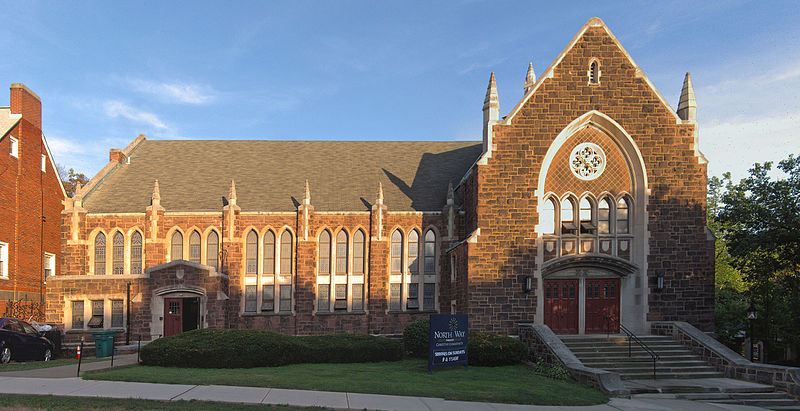
Now the home of St. John of God Parish, this is a splendid Gothic church that many another Catholic diocese would be proud to have for its cathedral. The fact that there are literally dozens of churches equally splendid in Pittsburgh and its surroundings is something Pittsburghers simply accept, but it absolutely astonishes outsiders. This one took four years to build; it opened in 1905. The architect was Akron-based William P. Ginther.
Camera: Olympus E-20n.




Here we see the main entrance and the top end of the improvised wooden wheelchair ramp, which looks like a Kennywood ride—perfectly safe but rather exciting.

Camera: Konica-Minolta DiMAGE Z3.
This was originally the German parish in this part of McKees Rocks. Above we see it from the parish cemetery, which is on a hilltop overlooking McKees Rocks in Kennedy Township.

William P. Ginther also designed the adjoining rectory, which is certainly a fine place to keep one’s priests.
Camera: Canon PowerShot A590 (hacked).


Camera: Olympus E-20n.
In the original version of this article, Father Pitt said that he did not know the original purpose of this building, but he guessed it was a convent. The guess was right: note the comment from Shelley below, for which old Pa Pitt is very grateful, confirming that this was where the sisters lived. A correspondent informs us that the architects were Link, Weber & Bowers, and the convent was built in 1930.

















